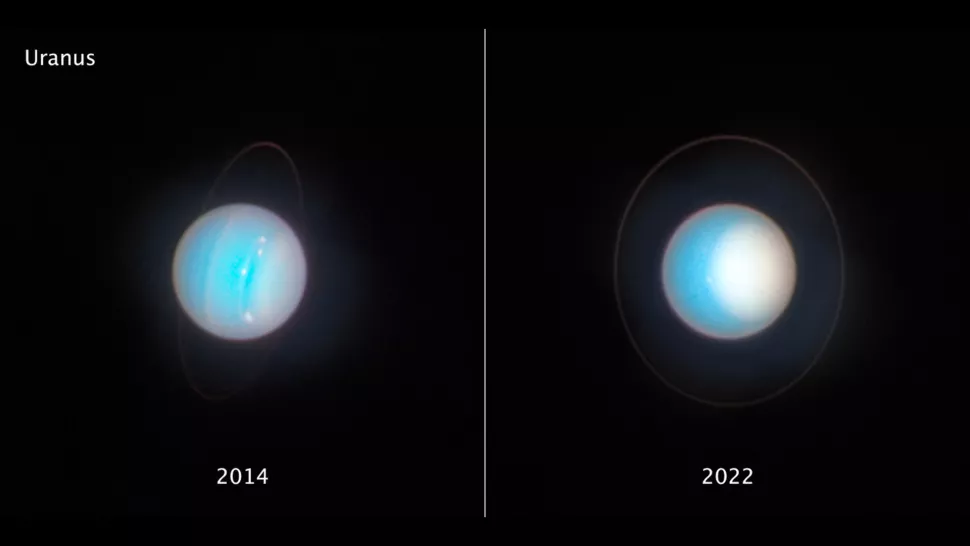The Hubble Space Telescope has captured new pictures of Jupiter and Uranus, showcasing the slow changes in weather on these immense, far-off planets. Unlike the unpredictable weather on Earth, the atmospheric conditions on outer solar system planets are relatively stable.
hese planets receive little sunlight and take years, if not decades, to complete a single orbit around the sun. Nonetheless, when astronomers compare Hubble images of these planets taken years apart, they observe that their atmospheres are still very much active.
In particular, images taken by the Hubble Space Telescope of Uranus, the ice giant, in 2014 and 2022, show a smoggy icy cap expanding over the planet’s north pole as it approaches its northern summer season. Each season on Uranus lasts for over 20 years, and one year on this planet takes a staggering 87 Earth years to complete.

According to the Space Telescope Science Institute, the 2022 image of Uranus reveals a white cap composed of “photochemical haze,” akin to the smog that develops over major cities on Earth due to air pollution.
Hubble has been monitoring the growth of this cap for several years, noting that it has become increasingly radiant. While scientists are investigating the chemical processes that prompt the formation of this cap, there is limited data available on distant Uranus due to the extended length of its seasons.
The planet’s next summer solstice will take place in 2028, and the last time astronomers were able to observe Uranus during this part of its yearly cycle was in the 1940s.
Differences between Uranus’ seasons are believed to be extreme, as the planet rotates around an axis that is tilted on a mere 8-degree angle off its orbital plane. That means the planet almost rolls on its side. As a result, Uranus’ two hemispheres receive barely any sunshine during their respective winter periods.


